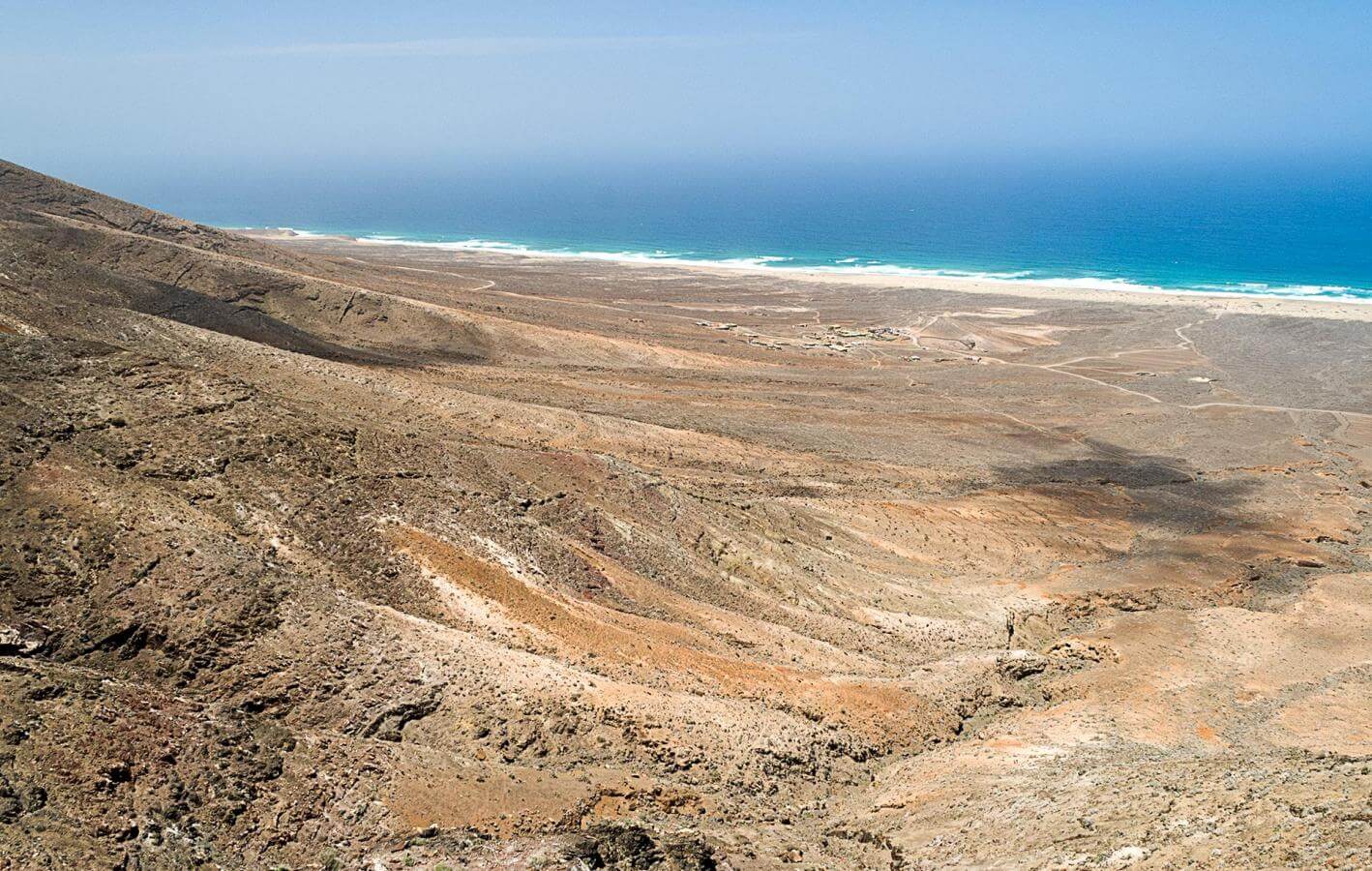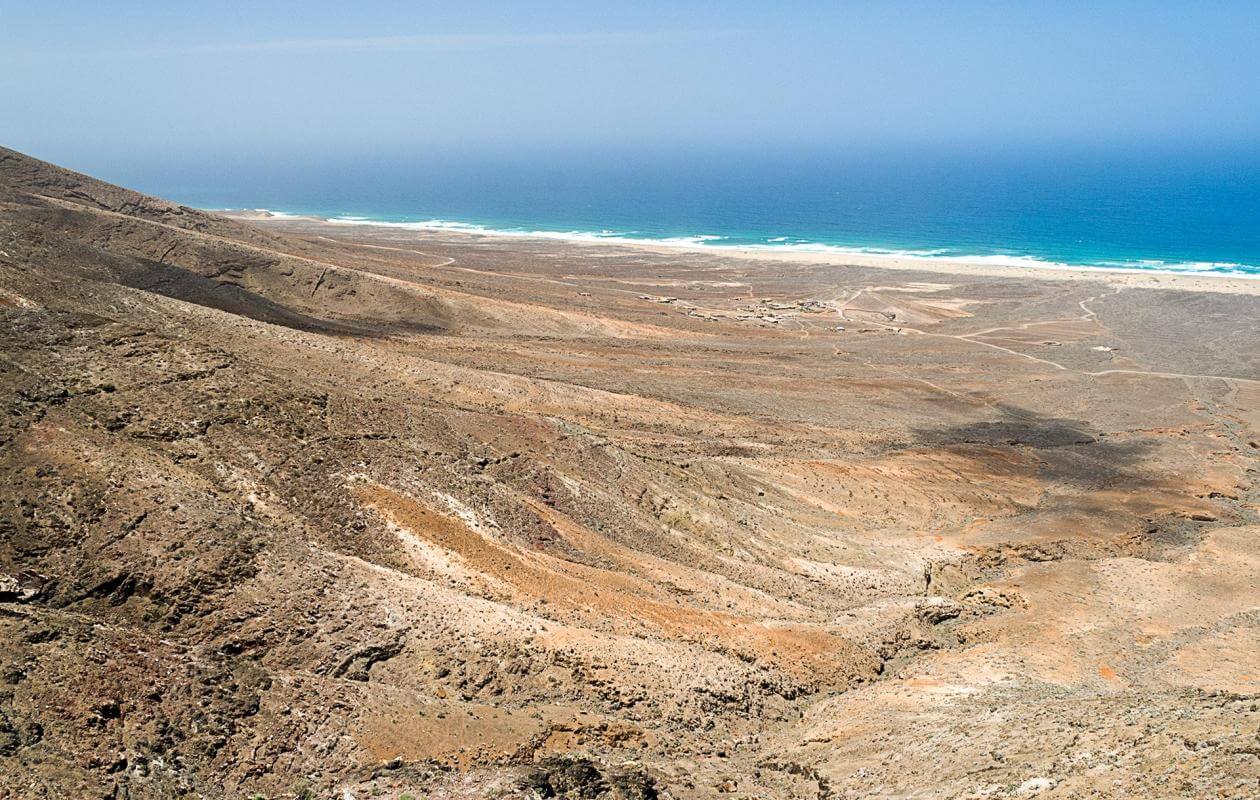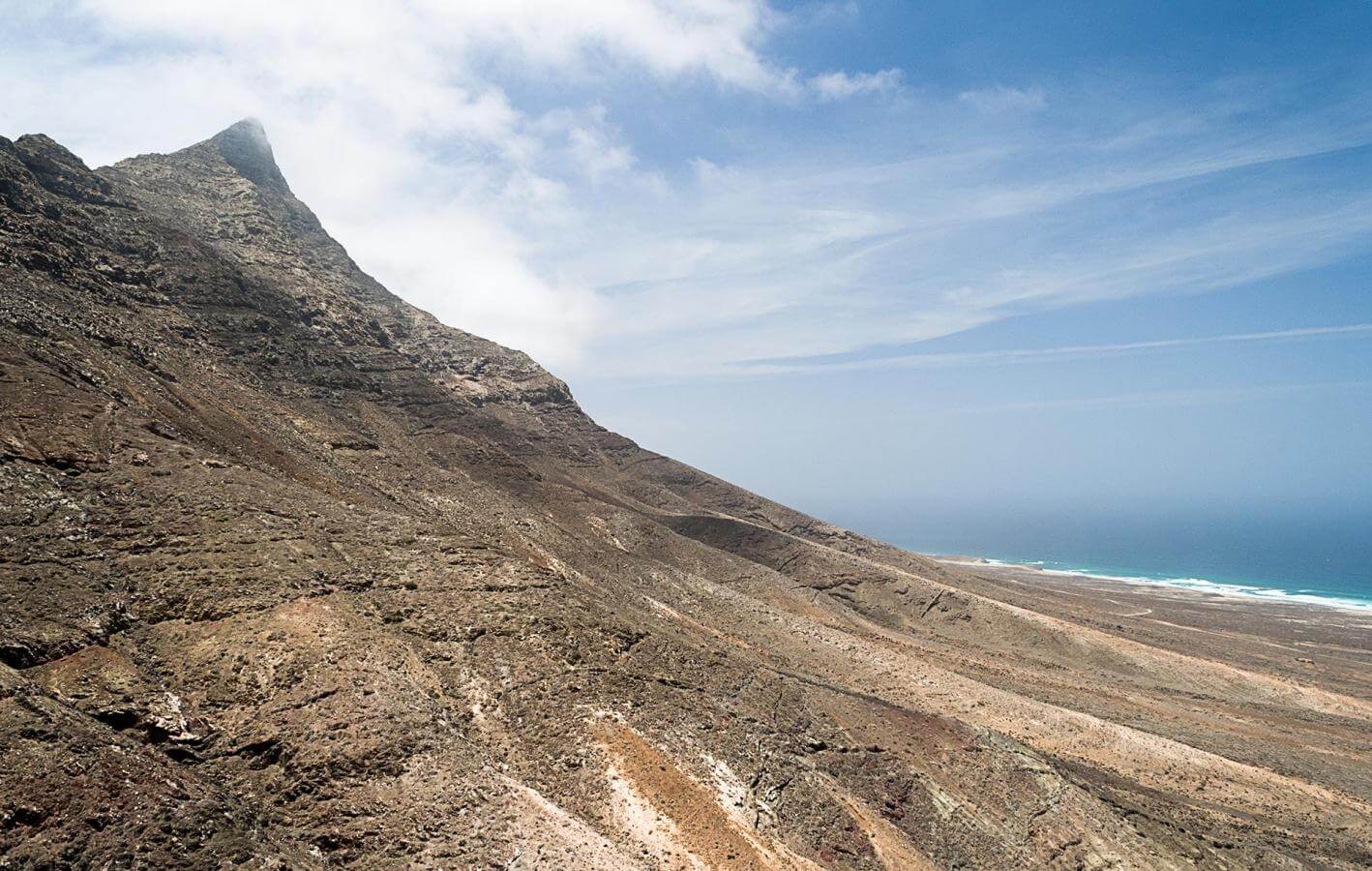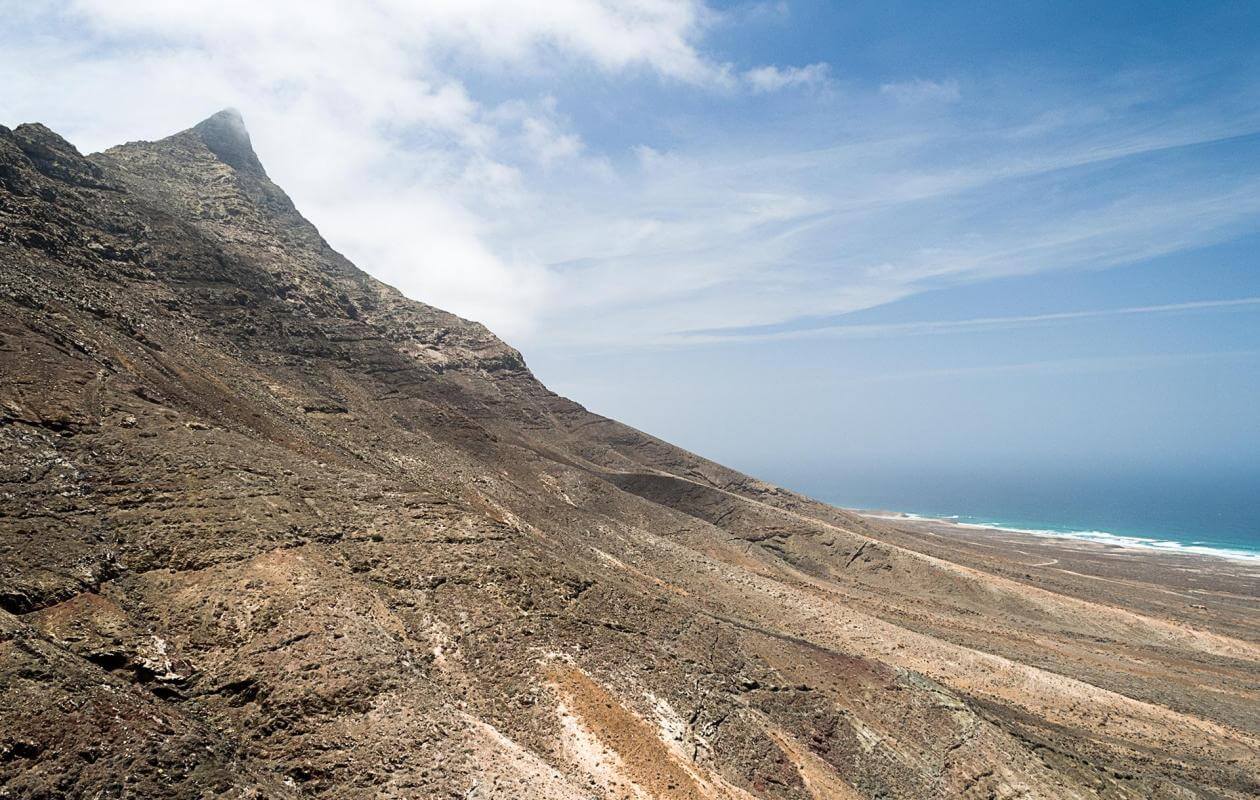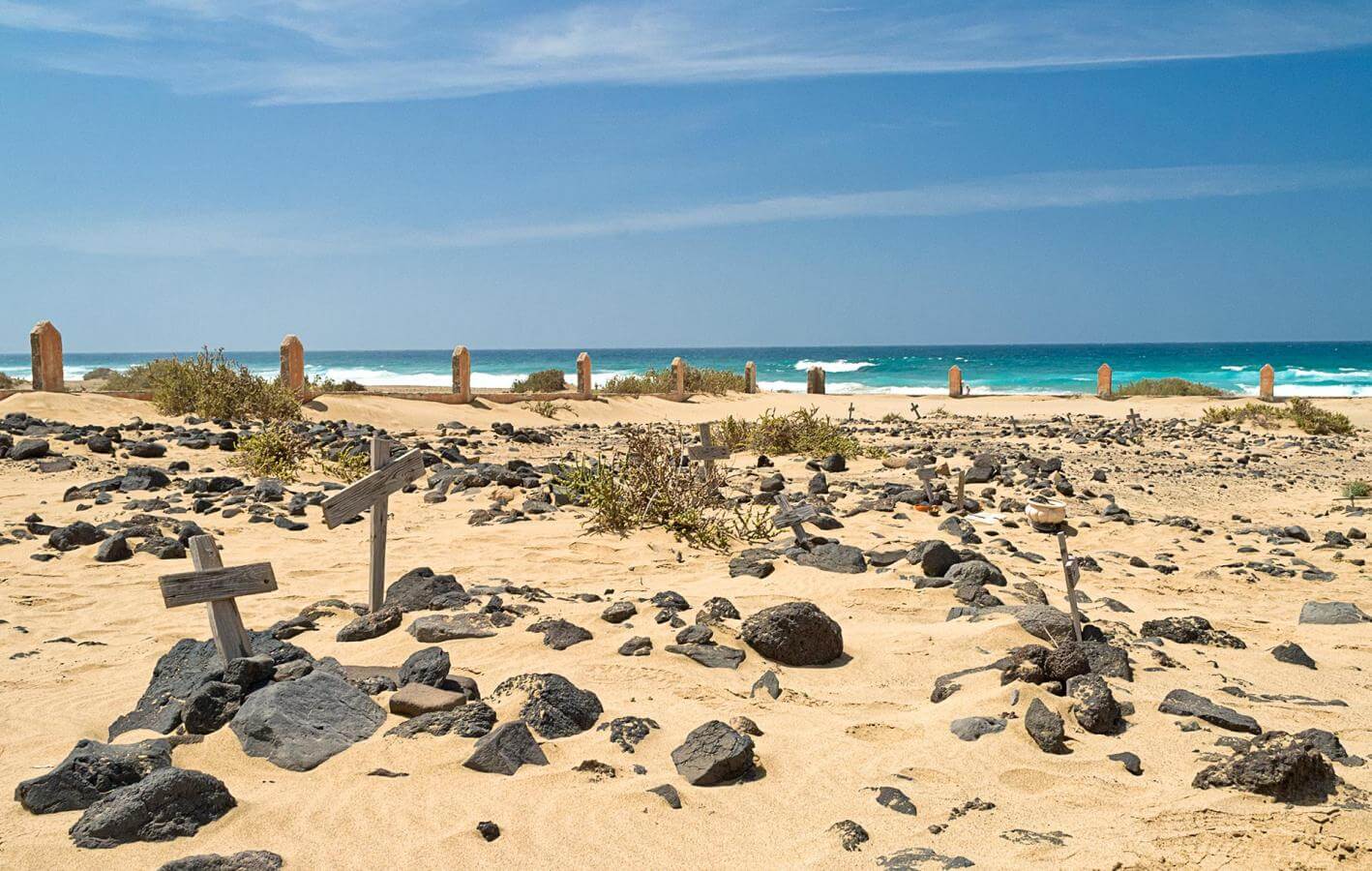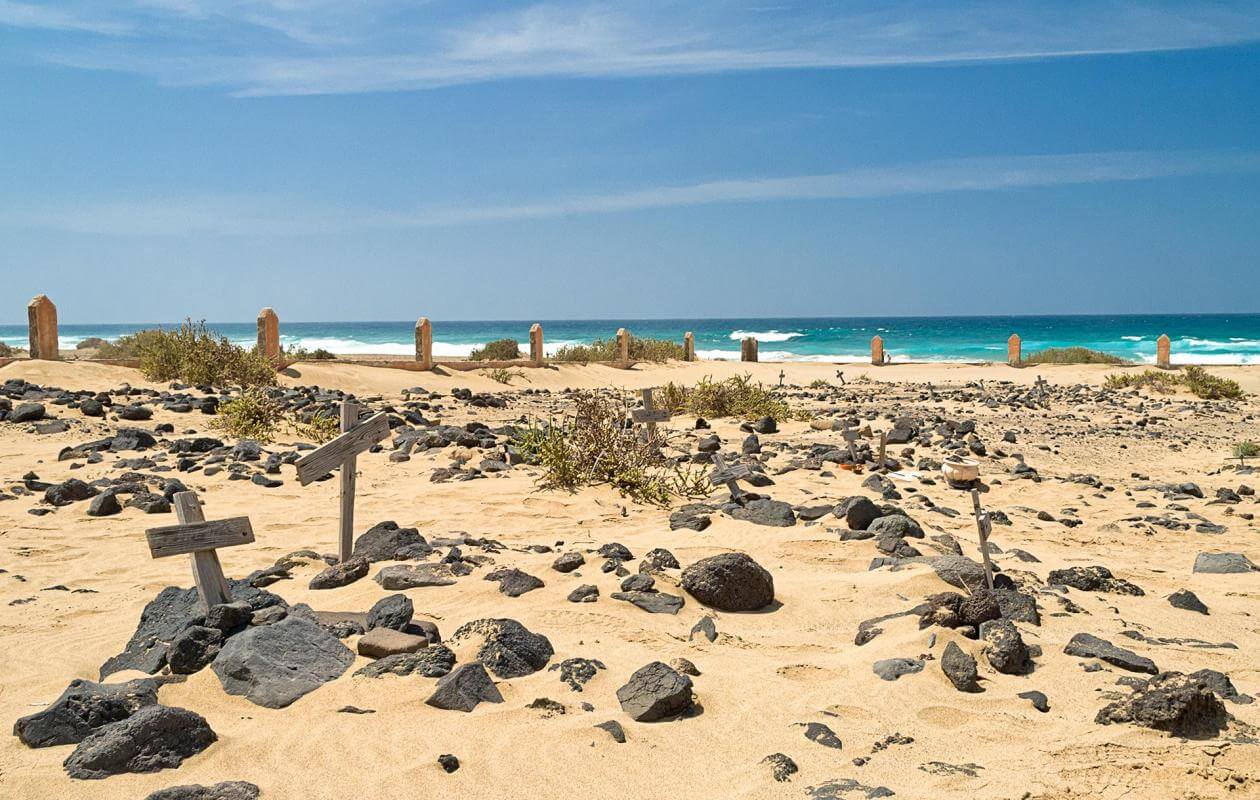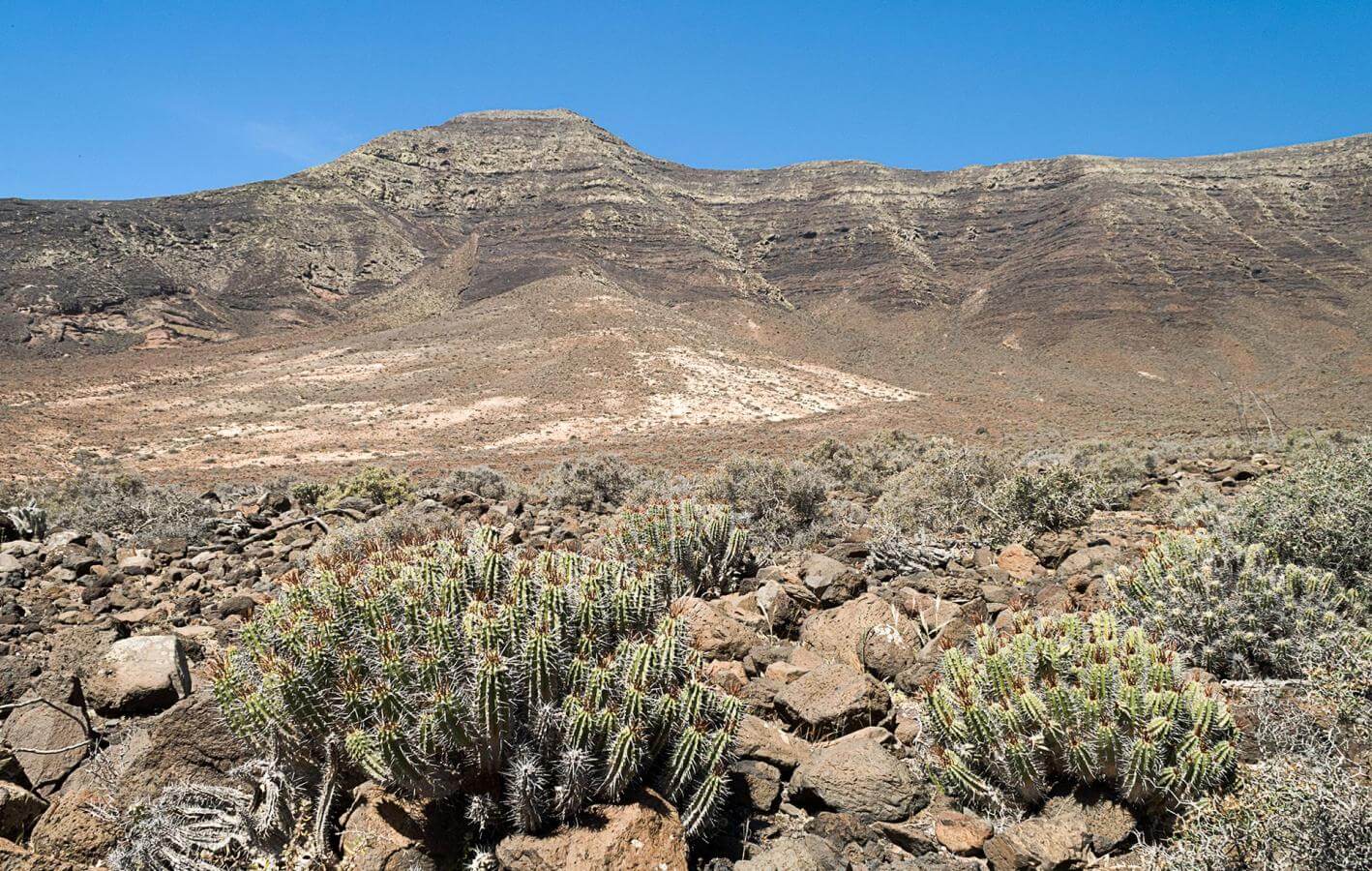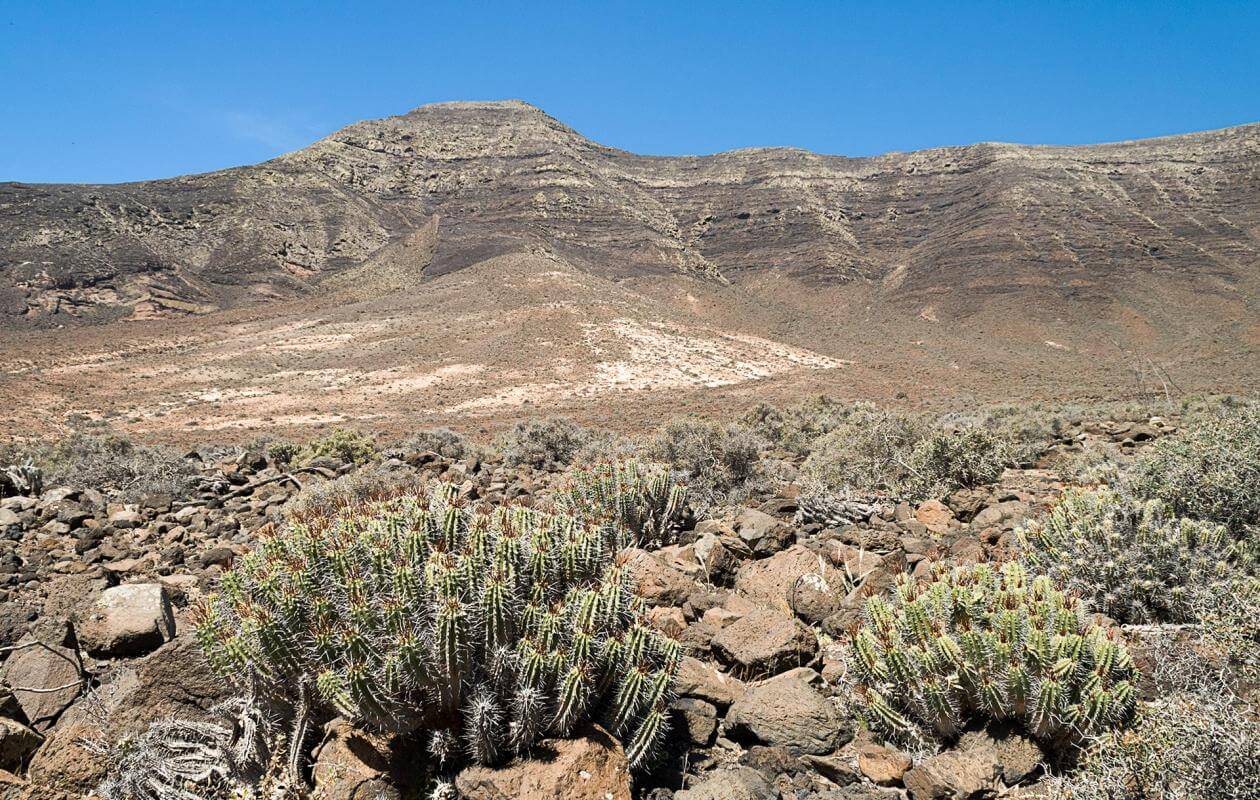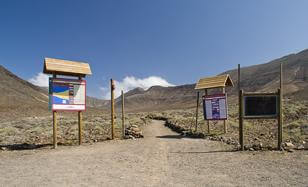
This valley is typical of the leeward side of the Jandía Peninsula. It is U-shaped with a relatively flat bed and is quite deep and short considering that from the start point itself, you can see the head of the ravine where you will cross over to the other side of the Jandía Peninsula.
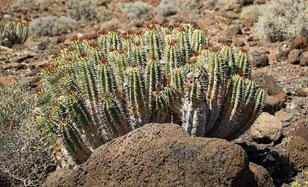
Euphorbia handiensis, one of Fuerteventura's botanical treasures, has one of its main expanses in Gran Valle. It is a stumpy cactus with a lot of spines that branches out significantly from the ground up. This species is very well adapted to drought and can live for years without water. As an endangered species and a symbol of Fuerteventura, it now enjoys protected species status.
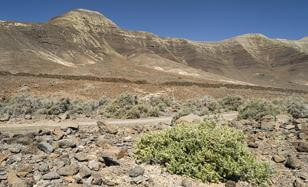
Gran Valle was one of the places in Jandía where, besides herding, cultivation was also carried out and there are remains of walls related to the latter. But the most striking aspect of Gran Valle is a wall, without any particular purpose, that runs from edge to edge of the gorge of the ravine. Was it meant to limit herds? Did it demarcate territory? No one really knows the reason behind this solitary wall.
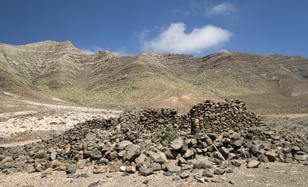
This complex of dry-stone houses in the central area of the upper middle section of the ravine is probably what remains of an indigenous settlement that was reused and modified post the Conquest. Thanks to the source on the other side of the ravine, this settlement, where you can make out dwellings and corrals for livestock, could survive.
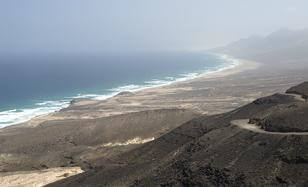
At the top of the ascent, you have before you an impressive view of the Cofete beach, one of the last virgin coasts. Unsuitable bathing conditions are one of the reasons why this area remains untamed and untouched by touristic establishments. On your right, you only have the Winter manor, built by a German who carried out activities in the Jandía Peninsula in the 20th century.
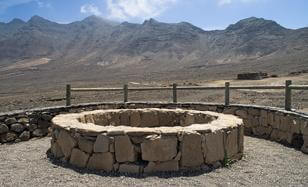
The town of Cofete is hardly a handful of low houses where practically no remains of the first houses dating back to the 19th century are to be found. The lime kilns at the entrance to the settlement will surely grab your attention as will a modern sculpture that pays homage to the shepherd and his faithful companion, the Bardino or Perro Majorero, a breed of dog typical to the island.
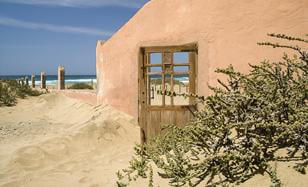
This cemetery is located on the sand itself and is a unique place that allows the memory of the dead to live on in the sands of the beach. This small burial ground was created because in the middle of the 19th century, the most prosperous period on Fuerteventura, Cofete and the other inhabited areas were too far away. Today, this cemetery on the beach, where the waves practically wash up against its walls, marks the end of the trail.
- Never leave waste of any type lying around, including cigarette butts. Leftover food leads to a proliferation of rats and wild cats, which pose a serious threat to the fauna.
- Respect the animals. Do not bother them or feed them. If you see an injured specimen, you can call the emergency number: 112. Do not pick flowers or plants.
- Do not pick up or take away stones or any other item from the natural environment. And do not move them to pile them up into sadly famous 'towers'.
- Respect the signposting along trails. Leaving the set paths causes damage to the environment and could also be dangerous for you and anyone with you.
- It is safer to keep your pet on a lead.
- Try not to alter the peace of the environment with excessive noise (loud music, yelling, etc.).




